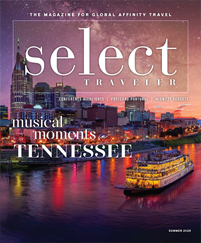Let’s be honest — Mardi Gras is bizarre. During Mardi Gras, otherwise shy and retiring people beg for worthless pieces of plastic magically transformed into momentary treasures. Adults dress up in outlandish feathered costumes that would make Big Bird envious. And plenty of people who have no clue what Lent is celebrate right before it arrives.
Mardi Gras, the Tuesday before Ash Wednesday on the Christian calendar, has deep historical and religious roots. That heritage is celebrated in many American cities, and not just for one day. Today, there’s a Mardi Gras season, and that allows groups to schedule some joyful times in the middle of an otherwise dreary winter.
Mardi Gras 2021 will be most unusual — circumspect, cautious or canceled — so travel planners are looking ahead to the rest of the decade. Here’s a look at five destinations, each with multiple ways to have a Mardi Gras experience.
New Orleans
New Orleans is the king-daddy of Mardi Gras and features food, drink, parties and parades galore throughout the city, well beyond the famous French Quarter. Seventy parades fill a normal Mardi Gras season, and New Orleans has staged nearly 2,000 of them since 1857, according to New Orleans and Co., the city’s marketing organization.
“Mardi Gras can be done anywhere, but we take it very, very seriously,” said Kim Priez, senior vice president of tourism. “It is so much fun to see the crazy pageantry of Mardi Gras here. We like the identity of the largest free show on earth.”
Priez’s biggest tip to tour planners is to book a package that involves pre-arranged space in a parade viewing stand that keeps a group together and “makes your group feel pampered and special.” Priez said New Orleans’ huge inventory of parades, viewing stands and hotels can create memorable itineraries.
Of course, there will be no parades in 2021, but there’s always a Mardi Gras vibe here. Your group can dress up in flamboyant Mardi Gras costumes in a permanent exhibit called “It’s Carnival Time in Louisiana” at the Presbytere museum. And the inside scoop about building those incredible parade floats is told at Blaine Kern’s Mardi Gras World production studio tour.
Mobile, Alabama
New Orleans may have the biggest Mardi Gras celebration, but Mobile, Alabama, claims the first American Mardi Gras, held in 1703.
“We have a reputation for being a family-friendly celebration,” said Tara Zieman, director of marketing and communications for Visit Mobile. “That grew organically, and we don’t disagree. Our downtown lends itself to family activities.”
In a nonpandemic year, 40 parades are spread throughout three weeks, with a cumulative spectator total of 1 million. Much focus is on Mardi Gras Park, a large greenspace across from Fort Conde, a partial reconstruction of a French colonial fort. Permanent park residents include Mardi Gras-related statues such as a queen, a trumpet player and Joe Cain. Who’s Joe Cain? Only the creator of Mobile’s modern Mardi Gras. His impromptu parade in 1866 while dressed as a Native American chief he named Chief Slackabamarinico — just call him Chief Slac — got the ball rolling.
Two year-round mainstays are Toomey’s Mardi Gras — heaven for hunters of beads, trinkets and costumes — and the Mobile Carnival Museum, a collection of dazzling costumes, jewelry, floats and photos. Along the way, learn that Mobile’s favorite throw — that’s what souvenirs thrown from parade floats are called — is the Moon Pie and that there’s one parade where anyone can march. It’s the Sunday before Fat Tuesday and is another salute to Joe Cain.
Coastal Mississippi
Biloxi, Pascagoula, Gulfport and several other cities are in a Mardi Gras sweet spot, according to Anna Roy, public and media relations manager for Coastal Mississippi.
“We’re between Mobile’s family atmosphere and the New Orleans party-party scene,” she said. “Mardi Gras is a big event here, and we have the best of both worlds. With a dozen cities, there’s great variety. Each has parades — usually daytime and some at night — and other accessible, fun events.”
Festivities began this year on January 5, Twelfth Night, when the historic Biloxi Lighthouse is bathed in purple, gold and green. The 65-foot-high spire is a Mardi Gras beacon through Fat Tuesday and the Gulf Coast Carnival Association’s daytime parade in Biloxi. The association’s nighttime parade is on the preceding Saturday.
Several communities’ parades are along U.S. 90, with a sparkling Gulf of Mexico backdrop for themed floats and their passengers, who pitch throws to excited spectators. Roy says these parades have a casual, small-town flavor, with good parking and accessible perspectives.
King cakes — colorful, sugary delights, each hiding a plastic baby — are seasonal specialties at coastal bakeries, including Biloxi’s Vietnamese-owned Le Bakery. Tour leaders can delight a group by ordering king cakes ahead of time. New in 2020 was the Coastal Mississippi Mardi Gras Museum in Biloxi’s revitalizing Howard Avenue district. It’s a target even outside of Mardi Gras season.
Galveston, Texas
Texans can throw a party, and the folks in Galveston say their Mardi Gras celebration is the largest in the Lone Star State and the third-largest in the nation. However, superlatives don’t matter when your party place is Galveston’s historic district and your backdrop is the Gulf of Mexico.
“We have plenty of fun with more than 25 parades, 300 million beads and 300,000 guests during a normal Mardi Gras,” said Michael Woody, chief tourism officer for Visit Galveston. The city has been honing its party credentials since 1867. The coronavirus pandemic, World War II and a few other incidents have interrupted the string, but Woody says Galveston will be geared up to stage the city’s 110th Mardi Gras in 2022.
The city cordons off a large portion of downtown for a festival ground that creates a street fair atmosphere for vendors and concert stages that complement the many parades. Parades use two routes: One concentrates on the historic district, where buildings date to the mid-1800s, and a longer route uses Seawall Boulevard.
The biggest parade is the Knights of Momus Grand Night Parade on the Saturday before Fat Tuesday. But perhaps the most fun is the Funky Uptown Umbrella Brigade Parade. Tour groups are welcome to march along if everyone sports a decorated umbrella.
St. Louis
St. Louis says its blowout is the second-largest Mardi Gras celebration in the nation. Never mind that other cities make the same claim. Just have another beer and holler for another throw.
Mardi Gras began inauspiciously here in 1979 when five friends spilled out of a party for an unplanned parade. For some reason, they had beads to throw. A five-person lark grew through the decades into diverse events that include three major parades with total attendance of 500,000. One is the Beggin’ Pet Parade, which organizers call the world’s largest costumed pet parade.
“Most events take place in the Soulard neighborhood, a historic district south of downtown,” said Renee Eichelberger, director of leisure travel sales at Explore St. Louis. She noted that much Mardi Gras action takes place at Soulard Farmers Market, an indoor/outdoor marketplace that predates the city’s Mardi Gras festivities by 200 years. After the pet parade, many revelers reassemble at the market for the Mardi Gras Wiener Dog Derby, which determines “the dashingest dachshund in all the land.”
Other diversions on the calendar include a Cajun cookoff, a Taste of Soulard sampling event and the Run for Your Beads 5-K, which is fun for participants and spectators alike. Remember, too, that tours of the Anheuser-Busch brewery are only five minutes from the market.









